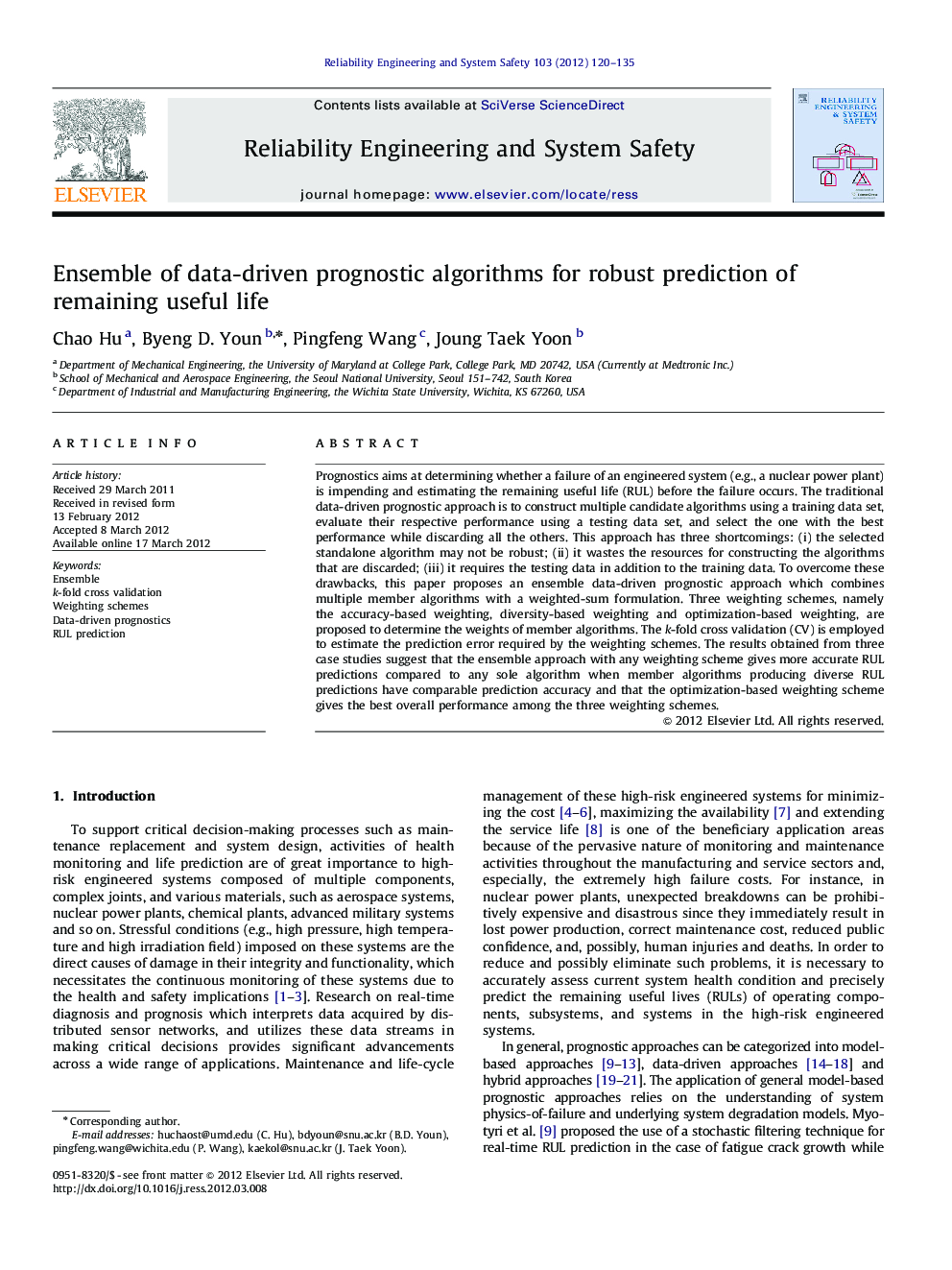| Article ID | Journal | Published Year | Pages | File Type |
|---|---|---|---|---|
| 805752 | Reliability Engineering & System Safety | 2012 | 16 Pages |
Prognostics aims at determining whether a failure of an engineered system (e.g., a nuclear power plant) is impending and estimating the remaining useful life (RUL) before the failure occurs. The traditional data-driven prognostic approach is to construct multiple candidate algorithms using a training data set, evaluate their respective performance using a testing data set, and select the one with the best performance while discarding all the others. This approach has three shortcomings: (i) the selected standalone algorithm may not be robust; (ii) it wastes the resources for constructing the algorithms that are discarded; (iii) it requires the testing data in addition to the training data. To overcome these drawbacks, this paper proposes an ensemble data-driven prognostic approach which combines multiple member algorithms with a weighted-sum formulation. Three weighting schemes, namely the accuracy-based weighting, diversity-based weighting and optimization-based weighting, are proposed to determine the weights of member algorithms. The k-fold cross validation (CV) is employed to estimate the prediction error required by the weighting schemes. The results obtained from three case studies suggest that the ensemble approach with any weighting scheme gives more accurate RUL predictions compared to any sole algorithm when member algorithms producing diverse RUL predictions have comparable prediction accuracy and that the optimization-based weighting scheme gives the best overall performance among the three weighting schemes.
